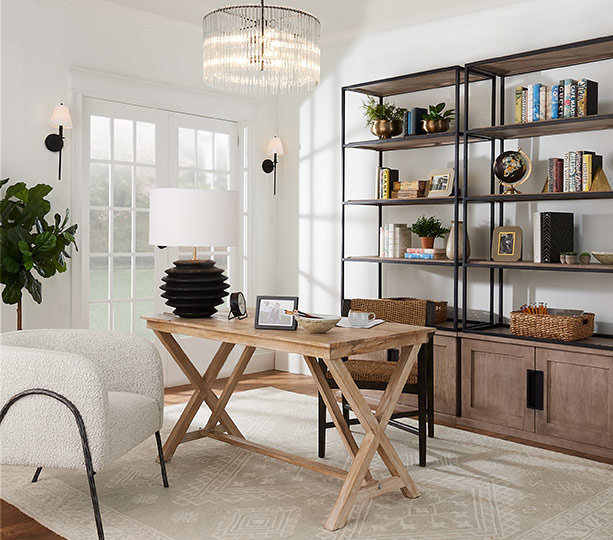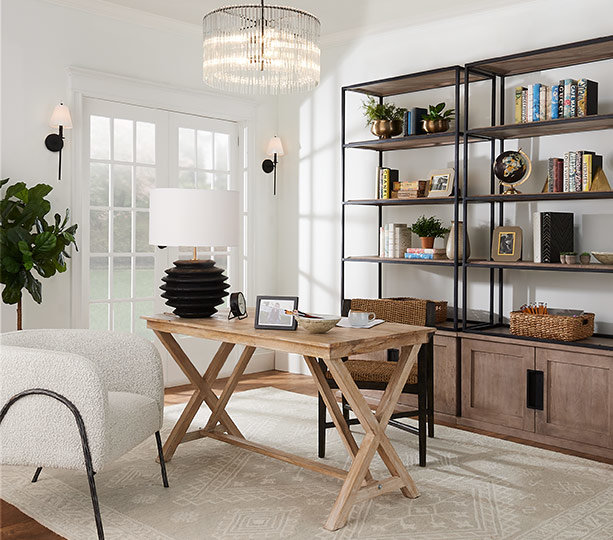
Are you looking to create a sleek and stylish office space? If so, choosing the right lighting is essential. In this article, we will explore different tips and tricks on how to choose minimalist lighting for your office. From selecting the right type of lighting fixtures to considering the color temperature and brightness, we’ve got you covered. So, if you want to create a minimalist and modern office environment that promotes productivity and comfort, keep reading to discover the secrets of choosing the perfect lighting for your workspace.
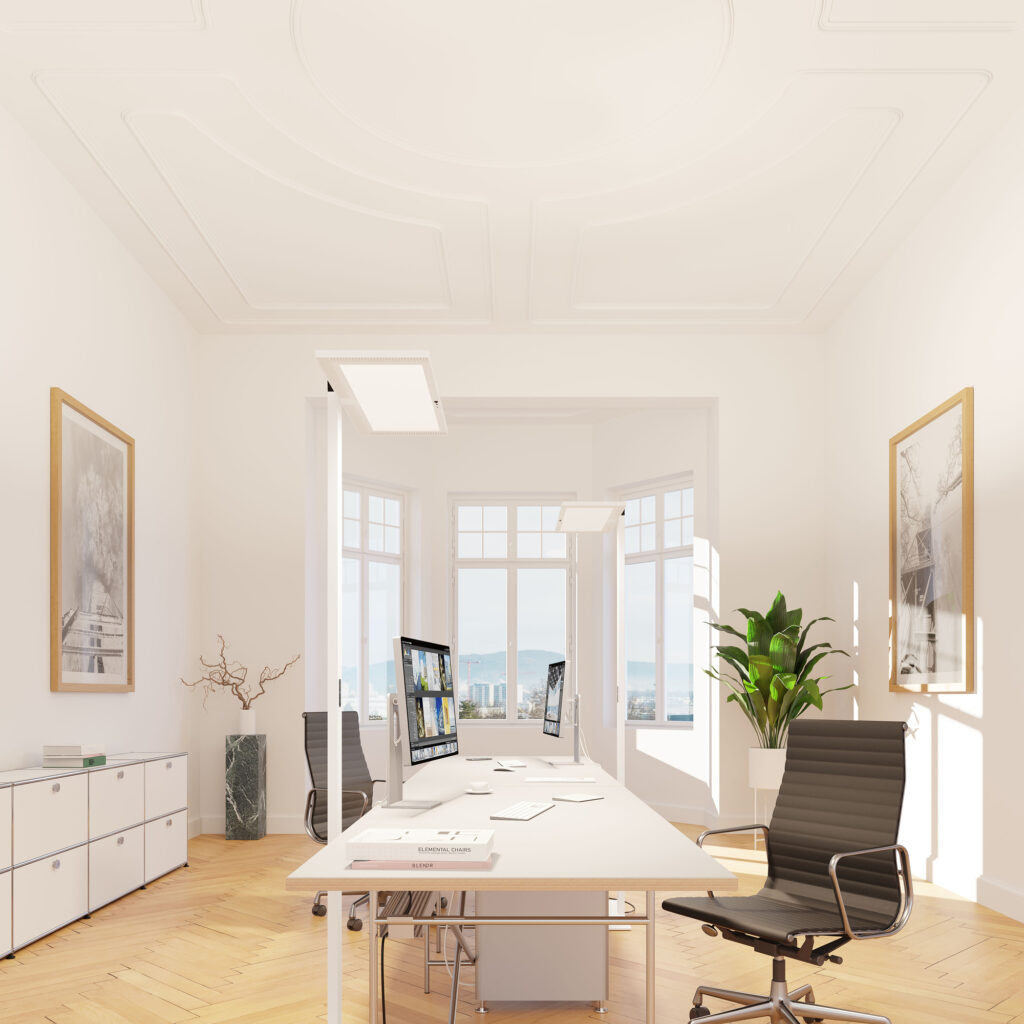
Understanding minimalist lighting
Minimalist lighting is a design approach that focuses on simplicity, clean lines, and minimal ornamentation. It embraces the idea of “less is more” by using unobtrusive and streamlined lighting fixtures that blend seamlessly with any interior style. By choosing minimalist lighting for your office, you can create a modern and sophisticated ambiance while promoting a productive and visually comfortable workspace.
Key features of minimalist lighting
Minimalist lighting fixtures typically have a sleek and uncluttered design with neutral colors like black, white, or metallic finishes. They are often characterized by clean geometric shapes, such as straight lines, squares, or circles, and are made with high-quality materials like metal, glass, or fabric. Additionally, minimalist lighting fixtures are usually compact and unobtrusive, allowing them to blend into the background while providing adequate illumination.
Benefits of minimalist lighting in the office
Opting for minimalist lighting in your office can offer several advantages. First and foremost, it creates a clutter-free and organized atmosphere, reducing visual distractions and promoting focus and concentration. The clean lines and simplicity of minimalist lighting fixtures can also contribute to a visually appealing and contemporary office design, enhancing the overall aesthetics of the space.
Furthermore, minimalist lighting tends to provide a balanced and even distribution of light, reducing shadows and creating a well-lit workspace. This can help prevent eye strain and fatigue, promoting employee comfort and productivity. Moreover, minimalist lighting fixtures are often energy-efficient and can contribute to reducing energy consumption, thereby lowering utility costs and minimizing the office’s environmental footprint.
Factors to consider before choosing minimalist lighting
Before selecting minimalist lighting fixtures for your office, there are several factors to consider. First, assess the size and layout of your workspace. Determine the areas that require adequate lighting, such as individual workstations, meeting rooms, or communal spaces. Analyze any specific lighting tasks, such as reading, writing, or computer work, to identify the appropriate lighting requirements for each area.
Additionally, consider the role of natural light in your office. Assess the availability and intensity of natural light throughout the day and how it interacts with artificial lighting. Natural light can enhance the visual comfort of employees, and integrating it with minimalist lighting can create a harmonious and balanced lighting scheme.
Lastly, take into account the overall office design and aesthetics. Choose minimalist lighting fixtures that complement the style and ambiance you want to achieve. Consider whether you want the lighting to blend discreetly into the background or make a bold design statement. Select fixtures that match the color palette, materials, and architectural elements present in your office.
Evaluating office lighting needs
To ensure you choose the most suitable minimalist lighting for your office, it’s crucial to thoroughly evaluate your lighting needs. This involves assessing workspace requirements, analyzing the role of natural light, and identifying specific lighting tasks.
Assessing workspace requirements
Start by evaluating the size and layout of your office space. Consider the different areas within the office, such as open workspaces, individual workstations, meeting rooms, or break areas. Think about the lighting needs and requirements of each area. For example, workstations may require focused task lighting, while communal areas may benefit from ambient lighting that creates a pleasant and welcoming atmosphere.
Analyzing the role of natural light
Natural light plays a crucial role in office lighting as it provides numerous benefits for employee well-being and productivity. Assess the availability and intensity of natural light in your office throughout the day. Identify the areas that receive direct sunlight and those that are more shaded. This analysis will help determine how to best integrate artificial lighting fixtures to complement and enhance the natural light.
Identifying specific lighting tasks
Every office has different lighting tasks depending on the nature of the work being done. It’s essential to identify these tasks and select lighting fixtures accordingly. Common lighting tasks in an office include reading documents, working on a computer, conducting meetings, or engaging in collaborative work. Consider the appropriate lighting levels, color temperature, and light direction for each task to ensure optimal visibility and comfort for employees.
Types of minimalist lighting fixtures
When choosing minimalist lighting fixtures for your office, you have various options to consider. Here are three popular choices:
Pendant lights
Pendant lights are suspended from the ceiling and provide focused lighting in specific areas. They come in various shapes, sizes, and materials, allowing you to find the perfect pendant lights that complement your office design. Pendant lights can be used to highlight workstations, meeting tables, or reception areas while adding a touch of elegance and sophistication.
Track lighting
Track lighting consists of a series of adjustable light fixtures mounted on a track system. This versatile lighting option allows for flexible positioning and can be easily adjusted to direct light exactly where it is needed. Track lighting is ideal for illuminating larger workspaces or areas that require frequent changes in the lighting layout, such as art displays or collaborative zones.
Floor lamps
Floor lamps provide a practical and portable lighting solution for offices. They are particularly useful for adding additional lighting to specific areas or creating ambient lighting in corners or near seating arrangements. Floor lamps come in various designs and styles, allowing you to choose options that complement your minimalist office aesthetics while providing functional lighting.
Considerations for office layout and design
When incorporating minimalist lighting into your office, it’s important to consider how it will blend with the overall office layout and design. Here are some key considerations:
Matching lighting style with office aesthetics
Ensure that the minimalist lighting fixtures you choose align with the overall design and aesthetics of your office. Consider factors such as the architectural style, color palette, and materials used in the office design. Aim for a cohesive and harmonious look by selecting fixtures that complement and enhance the existing elements in the space.
Examining the impact of light color temperature
Light color temperature has a significant impact on the ambiance and mood of an office space. Warm white light (between 2,700K to 3,000K) creates a cozy and inviting atmosphere, suitable for areas where relaxation or creative activities take place. On the other hand, cool white light (between 5,000K to 6,000K) promotes focus and alertness, making it ideal for workstations and areas requiring high concentration.
Consider the lighting needs and requirements of each area, and choose light fixtures with appropriate color temperatures to optimize employee comfort and productivity.
Finding the right balance of ambient, task, and accent lighting
A well-designed office lighting scheme incorporates different types of lighting to create a layered and balanced environment. Ambient lighting provides overall illumination and ensures that the entire space is well-lit. Task lighting focuses on specific areas or tasks to provide targeted lighting for increased visibility and reduced eye strain.
Accent lighting highlights architectural features, artwork, or other focal points in the office, adding visual interest and depth to the space. Finding the right balance between these three types of lighting is essential for creating a comfortable and visually appealing office environment.
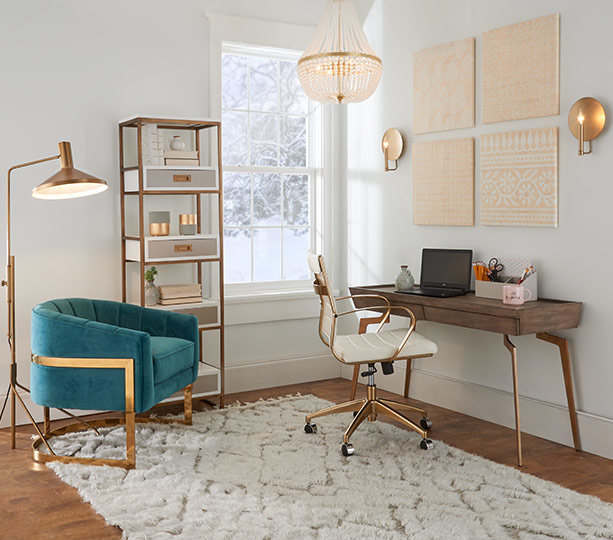
Energy-efficiency and sustainability
In line with sustainable practices and cost-efficiency, it is important to consider energy-efficient options when selecting minimalist lighting for your office. Here are some factors to consider:
Choosing LED lighting options
LED (Light Emitting Diode) lighting is a highly energy-efficient and long-lasting lighting option. LEDs consume significantly less energy compared to traditional incandescent bulbs, resulting in reduced energy costs and lower carbon emissions. Additionally, LED lights have a longer lifespan, minimizing the need for frequent replacements and reducing waste.
Opt for LED lighting options when selecting minimalist fixtures for your office to not only save energy and money in the long run but also contribute to a more sustainable office environment.
Understanding energy-saving features
When evaluating minimalist lighting options, look for fixtures with energy-saving features. This includes dimmable lights, occupancy sensors, and daylight sensors. Dimming capabilities allow you to adjust the brightness of the lights according to the task or time of day, further reducing energy consumption. Occupancy sensors automatically turn off lights when no one is present in the area, preventing unnecessary energy usage. Daylight sensors adjust the artificial lighting levels based on the amount of natural light available, optimizing energy efficiency.
By incorporating these energy-saving features into your minimalist lighting setup, you can maximize energy efficiency and minimize wastage.
Exploring sustainable materials and manufacturing practices
In addition to energy efficiency, consider the use of sustainable materials and manufacturing practices in the production of minimalist lighting fixtures. Look for fixtures made from recycled or recyclable materials, as well as those manufactured using environmentally friendly processes. This ensures that your office lighting choices align with your commitment to sustainability and minimizing the environmental impact.
The importance of lighting control
Proper lighting control is crucial for creating a comfortable and productive office environment. Here are some key aspects to consider:
Dimming capabilities
Dimming capabilities allow you to adjust the brightness level of the lights in your office. This is particularly beneficial when different tasks require varying levels of lighting. Dimming lights not only provide flexibility and control but also contribute to energy savings by reducing power consumption when full brightness is not needed. Incorporate dimming capabilities into your minimalist lighting fixtures to create a customizable lighting experience for each workspace.
Adjustable color temperature
Color temperature adjustment allows you to modify the warmth or coolness of the light emitted by your minimalist fixtures. This feature is particularly useful in environments where different activities and moods are required. Being able to tune the color temperature allows employees to personalize their lighting experience and create a more comfortable and conducive workspace.
Automation and smart lighting systems
Automation and smart lighting systems provide advanced control options for your minimalist lighting. These systems utilize sensors, timers, and programming to automatically adjust lighting levels and color temperature based on factors such as occupancy, time of day, or natural light availability.
By implementing automation and smart lighting systems, you can enhance energy efficiency, streamline lighting management, and create a seamless and user-friendly lighting experience for your office.

Considering employee comfort and well-being
Employee comfort and well-being should be a top priority when selecting minimalist lighting. Take into account the following aspects:
Reducing glare and eyestrain
Glare and eyestrain can have a detrimental effect on employee comfort and productivity. When choosing minimalist lighting fixtures, ensure they are designed to minimize glare and provide even and balanced illumination. Opt for fixtures with diffusers or shades to soften the light and prevent direct glare on work surfaces and computer screens.
Promoting circadian rhythm and productivity
The proper use of lighting in the office can help regulate employee circadian rhythms and enhance productivity. Consider fixtures that provide warm, soft lighting in relaxation or breakout areas, and brighter, cooler lighting in workstations during peak productivity hours. This mimics the natural progression of daylight, promoting alertness and focus during the day and relaxation in the evenings.
Ensuring appropriate lighting levels for different areas
Different areas within your office require varying lighting levels to meet their specific functions. Workstations, for example, require brighter task lighting to facilitate focused work, while meeting rooms may benefit from softer ambient lighting to encourage collaboration and discussion. Consider the activities and functions of each area and ensure that the lighting levels accommodate the tasks performed in those spaces.
Maintenance and longevity
When investing in minimalist lighting fixtures for your office, it’s important to consider their maintenance requirements and lifespan. Here are some factors to keep in mind:
Ease of cleaning and dust resistance
Opt for fixtures that are easy to clean and maintain. Minimalist lighting fixtures with smooth surfaces and dust-resistant materials minimize the accumulation of dirt and make cleaning a breeze. Regular cleaning ensures that the lighting remains effective and free from any obstructions.
Durability and lifespan of lighting fixtures
Choose lighting fixtures that are durable and built to last. Look for fixtures made from high-quality materials and with solid construction to withstand the rigors of everyday use. Consider the expected lifespan of the fixtures to estimate when replacements might be necessary, and choose brands or manufacturers known for their reliable and long-lasting products.
Replacing and upgrading lighting components
Lighting technology constantly evolves, and it may be necessary to replace or upgrade lighting components to keep up with advancements. Select lighting fixtures that allow for easy replacement of bulbs, drivers, or other components. This ensures that you can adapt to new technologies, improve energy efficiency, and avoid the need for complete fixture replacements.
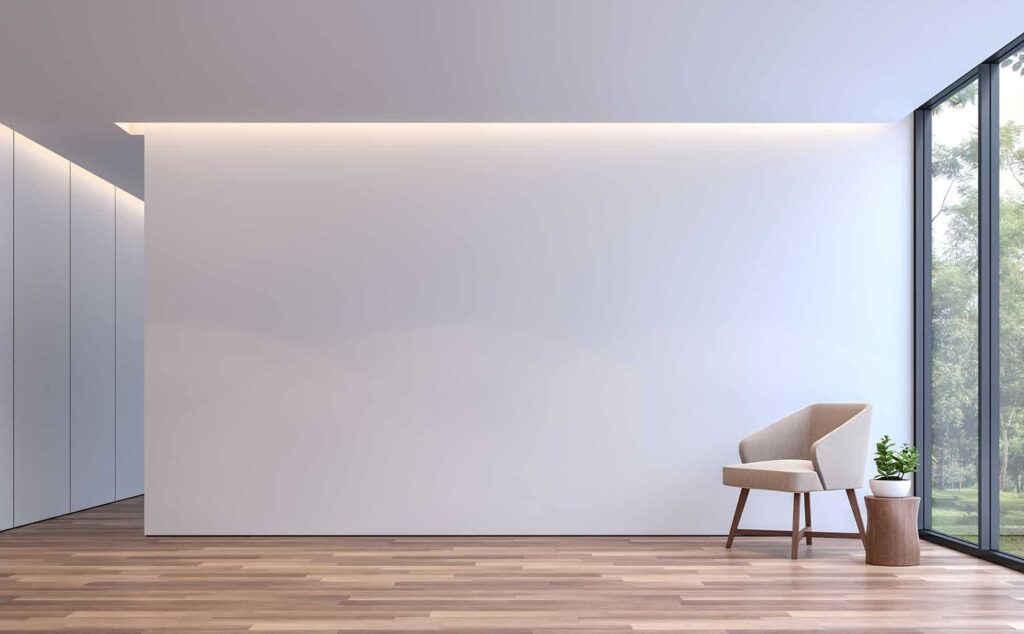
Budget considerations
While it’s important to prioritize the quality and functionality of your office lighting, it’s equally important to consider your budget. Here are some factors to consider:
Determining cost-effective options
Look for cost-effective lighting options that offer a good balance between quality and affordability. Consider the initial purchase cost of the fixtures as well as potential long-term savings on energy consumption and maintenance expenses. Research different brands and products to find the best value for your budget.
Factoring in long-term savings
Energy-efficient lighting options such as LED fixtures may have a higher upfront cost but can result in significant long-term savings. Calculate the potential energy savings and reduced maintenance costs over the expected lifespan of the fixtures to determine the overall cost-effectiveness of your lighting choices.
Comparing initial investment and maintenance expenses
Consider the initial investment required for purchasing and installing minimalist lighting fixtures. Compare this with potential maintenance expenses, including regular cleaning, bulb replacements, or potential component upgrades. Strive for a balance between upfront costs and ongoing maintenance to ensure that your office lighting remains within your budget without compromising quality or performance.
Seeking professional advice
If you’re unsure about the best approach to choosing minimalist lighting for your office, it’s always a good idea to seek professional advice. Consider consulting lighting designers or experts who have experience in office lighting design. They can provide valuable insights into the latest trends, techniques, and optimal lighting solutions for your specific office requirements.
Additionally, collaborate with office interior specialists who can offer guidance on how to integrate minimalist lighting seamlessly into your overall office design. They can provide input on the selection and placement of lighting fixtures to ensure a cohesive and visually appealing result.
Lastly, consider requesting lighting audits or assessments from professionals who can evaluate your existing lighting setup and provide recommendations for improvements. These audits can help identify areas of inefficiency or areas where lighting may not meet industry standards, enabling you to make informed decisions about your lighting upgrades.
In conclusion, choosing minimalist lighting for your office involves careful evaluation of your lighting needs, consideration of design elements, and attention to energy efficiency, employee well-being, maintenance, and budgetary constraints. By following these considerations and seeking professional advice when needed, you can create an office environment that is visually pleasing, productive, and sustainable.
